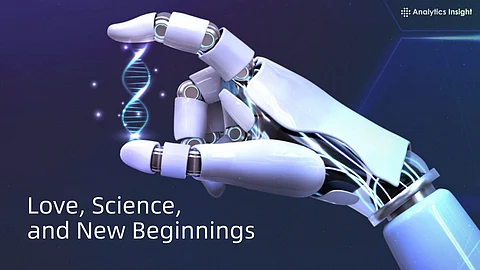
A couple has successfully conceived after 19 years of unsuccessful attempts, thanks to a revolutionary artificial intelligence system known as STAR. Developed by researchers at the Columbia University Fertility Center, the Sperm Track and Recovery (STAR) system enabled the couple to overcome significant infertility challenges, including the husband’s diagnosis of azoospermia, a condition where no sperm is present in the ejaculate.
Understanding the STAR System
The STAR system utilizes an advanced AI-driven algorithm designed to identify exceptionally rare sperm that may elude even the most skilled embryologists. Dr. Zev Williams, the creator of STAR and director at Columbia, likened the process to finding “a needle buried in a thousand haystacks.”
The procedure begins with a fluidic chip that allows a semen sample to be slowly introduced. Once the AI detects viable sperm, it redirects that fraction into a secondary tube for fertilization or preservation. This innovative approach significantly enhances the chances of successful conception, especially for individuals facing severe male infertility.
In testing, researchers found that the STAR system could identify sperm even in samples where embryologists had previously found none. In one instance, it detected 44 sperm within an hour, a remarkable feat considering the time and effort invested by human specialists.
Successful Outcome for the Couple
Earlier this year, in March 2023, the couple provided a semen sample that was processed through the STAR system. Within two hours, viable sperm were isolated, leading to the successful fertilization of the wife’s eggs on the same day. Just a few days later, the embryo transfer was completed, and the couple is now four months pregnant, with both the mother and baby reported to be healthy.
This development highlights the potential impact of the STAR system on male infertility, particularly in cases of azoospermia, which affects approximately 1% of all men and accounts for about 10% of male infertility cases. Causes of azoospermia can range from obstructions in the reproductive tract to genetic disorders and environmental factors.
Dr. Williams emphasized the significance of this technology, stating that it can harvest even the smallest quantities of sperm without the use of harsh chemicals or lasers. The STAR system integrates AI, high-speed imaging, and robotics, ensuring a gentle approach to sperm isolation.
A Future of Hope for Infertile Couples
Researchers and medical professionals are optimistic about the potential for the STAR system to transform the landscape of fertility treatments. Many men diagnosed with azoospermia have previously been told they have no chance of biological fatherhood. The STAR system offers a new avenue of hope for these individuals and couples.
Dr. Williams envisions a future where technologies like STAR can provide opportunities for those previously deemed unlikely to have children. “The vision is to create technologies so that people who are told ‘you have no hope of having a child’ can go on to have healthy children,” he explained.
As the STAR system continues to evolve, its creators aim to enhance the number of successful in vitro fertilization (IVF) outcomes, potentially changing the lives of countless families facing infertility challenges.







